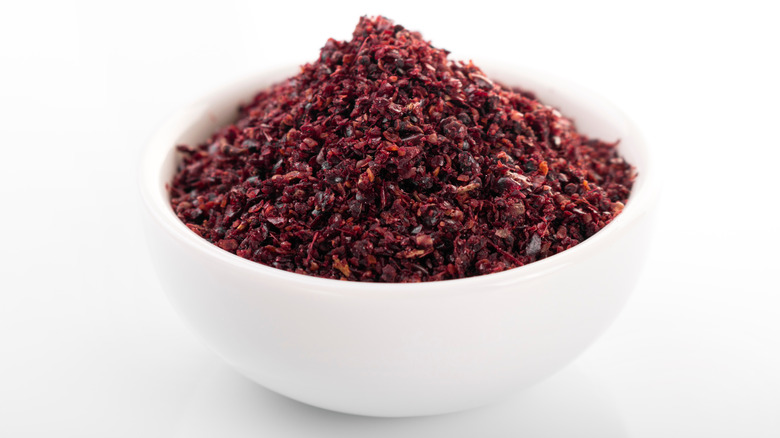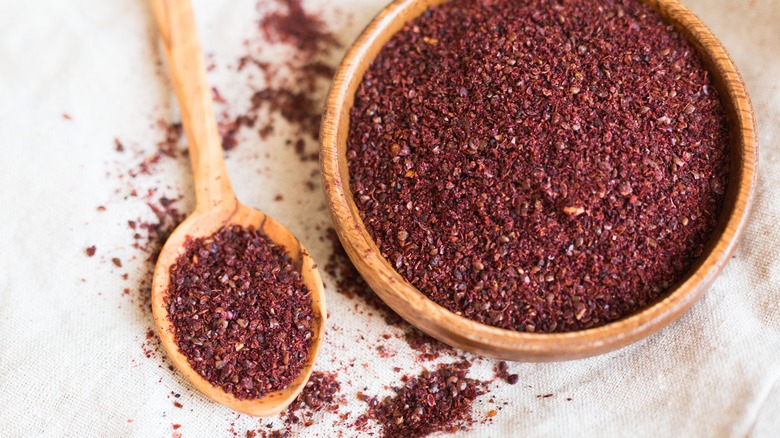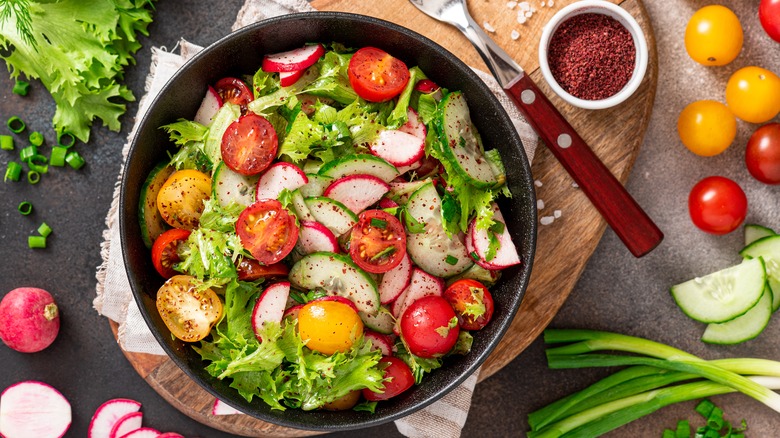The Colors And Flavors To Keep In Mind When Buying Ground Sumac
If you're seeking out spices that aren't always easily accessible in grocery store aisles, you may have to do a little more searching to find exactly what you're looking for. If you want to brighten up your dishes with sumac — a spice favored by celebrity chef Alton Brown — you may want to check Mediterranean food stores. But before you get too excited and purchase the first seasoning you find, you'll want to check it over for freshness first.
When you're buying sumac, it's important to pay attention to the color of the spice. While it can be purchased whole in some places, the seasoning is more commonly ground up before being sold. If you want the freshest flavor, even if you're purchasing pre-ground sumac, you'll want to look for the most vibrant red color. The berries are brightest when they're the most ripe, and the seasoning retains that color if it's ground up quickly after being harvested. The duller the color, the less fresh it is. So if your sumac is a vibrant crimson in color, it's safe to say it's pretty fresh.
Taste and texture can be indicators of freshness too
If you're buying from a store with seasoning bins that allows taste testing prior to purchasing, sampling a tiny bit of the seasoning can also be an easy way to gauge its freshness. The spice will generally taste pretty tart, and even a little citrussy. Even if you can't grab a quick taste, the smell might be able to help you pick out the freshest seasoning. The sumac should smell fairly floral and fresh.
The texture of the sumac can be an interesting way to elevate your dishes. Once the berries are harvested, they're ground up to separate the seeds from the spice. The seeds are then strained out, leaving only the sumac seasoning behind. Most sumac you find in stores will have already gone through this process, and will have a slightly coarse texture. While the smaller spice pieces will add a nice taste to your foods, the bigger ones will create an extra burst of flavor in any dish.
Sumac is an important part of one seasoning blend
Once you've chosen the freshest sumac at the store, be sure to keep it in an airtight container, away from heat and direct light. This storage method will keep the spice fresh for up to a year, so you can continue adding it to a variety of dishes, like homemade hummus or chicken kabobs. It can also be sprinkled on top of salads, desserts, or meaty dishes to add both a vibrant decoration and a bright burst of flavor on its own.
If you're cooking up some Mediterranean food, sumac is an essential ingredient in the seasoning blend za'atar. The blend combines sumac, salt, sesame seeds, marjoram, thyme, and oregano. It's commonly used as a rub for meats and vegetables, but it's also often added to pita bread.
No matter how you plan to use sumac, be sure to check its color — and maybe take a taste test — before purchasing the spice to make sure you're getting the freshest flavors for your food.


